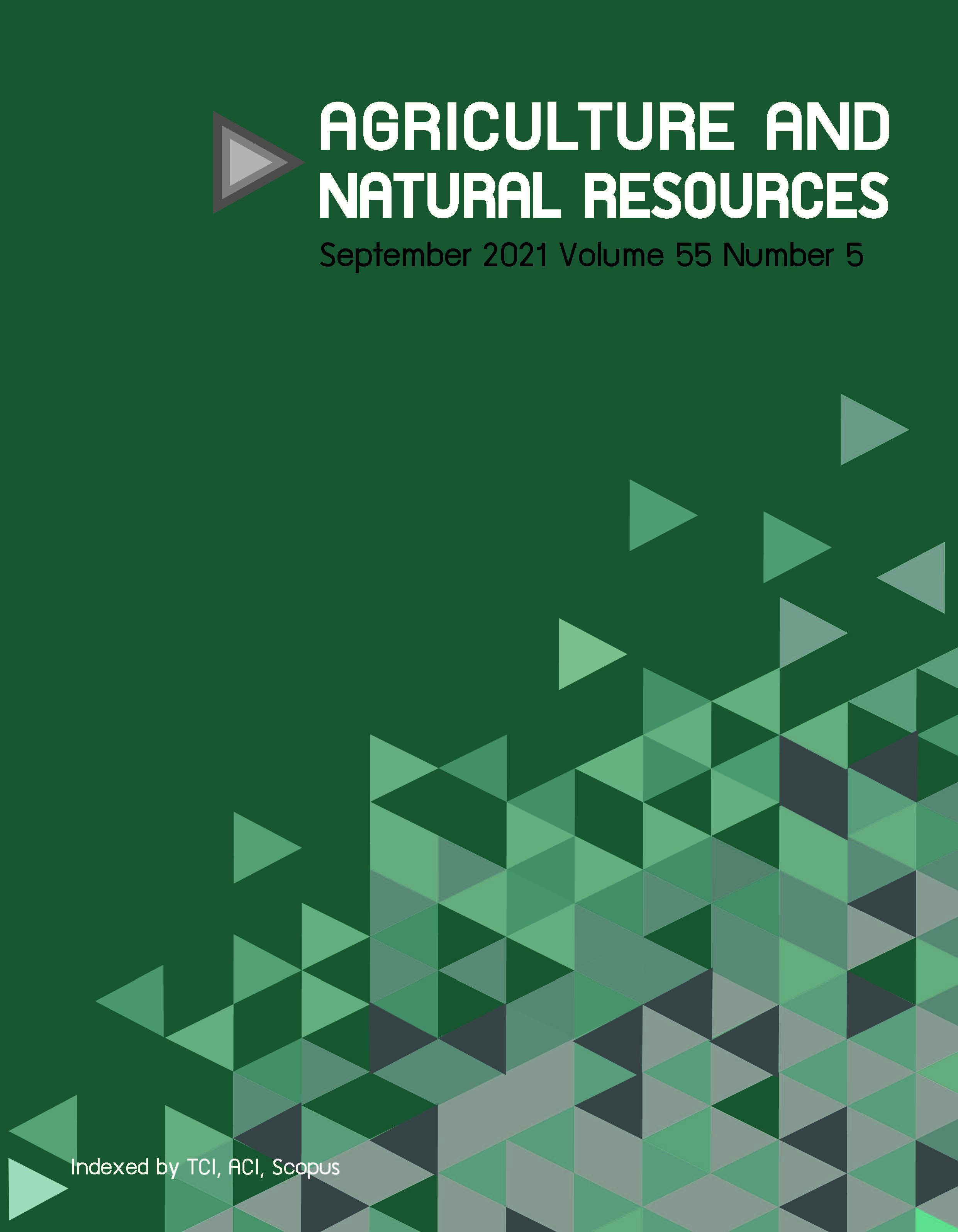Protein isolate precipitation using acid and salt on a by-product of mung bean starch extraction
Keywords:
Acid, Mung bean protein isolate, Protein precipitation, Salt, Starch extractionAbstract
This research investigated using salt and acid precipitation to extract protein from mung bean wastewater after starch extraction. However, there has been no published report regarding which precipitation treatment was better both in terms of quality and quantity. Thus, the objective of this study was to examine the influence of salt and acid addition on the yield, color, proximate analysis, mineral content and specific functional properties of mung bean protein isolate obtained from mung bean wastewater. Three types of salt (MgSO4, CaCl2 and (NH4)2SO4), and two types of acid (citric acid and hydrochloric acid) were used to precipitate protein from mung bean wastewater. The results revealed that precipitating protein with hydrochloric acid at pH 4.5 resulted in a significant (p < 0.05) increase in the weight of protein isolate compared to salt precipitation. Citric acid provided a brighter color, contained up to 80.33% protein and had higher functional properties. However, MgSO4 at 10 g/L showed comparable color, with up to 78.61% of protein, higher amounts of mineral compounds and equal functional characteristics. Citric acid and MgSO4 could be alternative protein precipitation agents since both are inexpensive, readily available and capable of precipitating the mung bean protein of a considerably higher quality.
Downloads
Published
How to Cite
Issue
Section
License
Copyright (c) 2021 Kasetsart University

This work is licensed under a Creative Commons Attribution-NonCommercial-NoDerivatives 4.0 International License.
online 2452-316X print 2468-1458/Copyright © 2022. This is an open access article under the CC BY-NC-ND license (http://creativecommons.org/licenses/by-nc-nd/4.0/),
production and hosting by Kasetsart University of Research and Development Institute on behalf of Kasetsart University.







